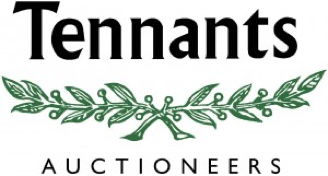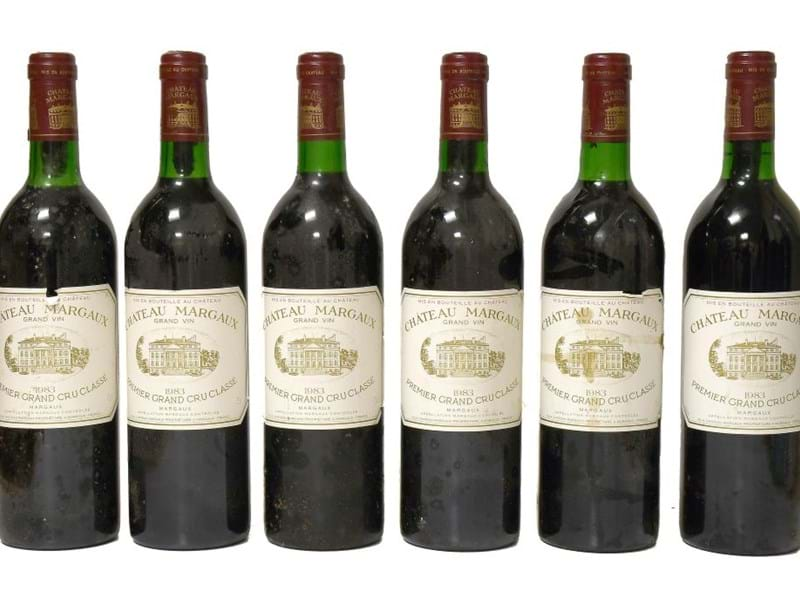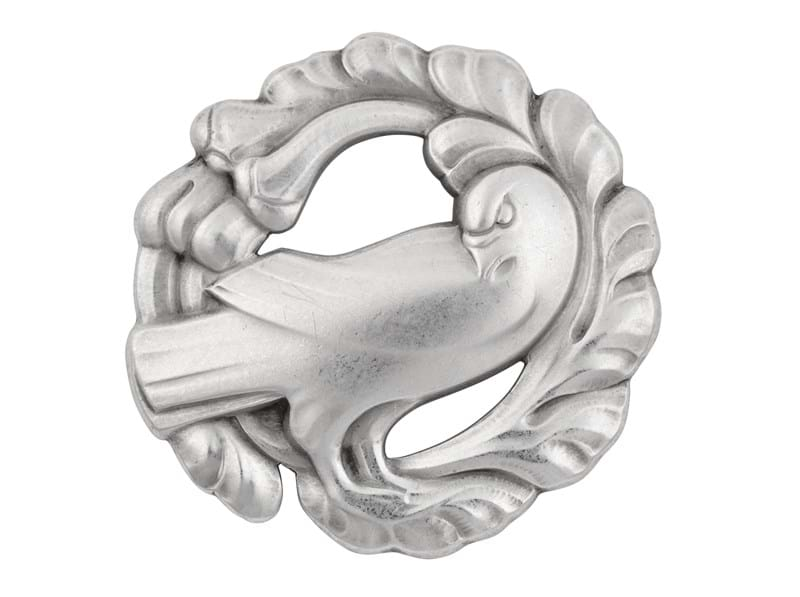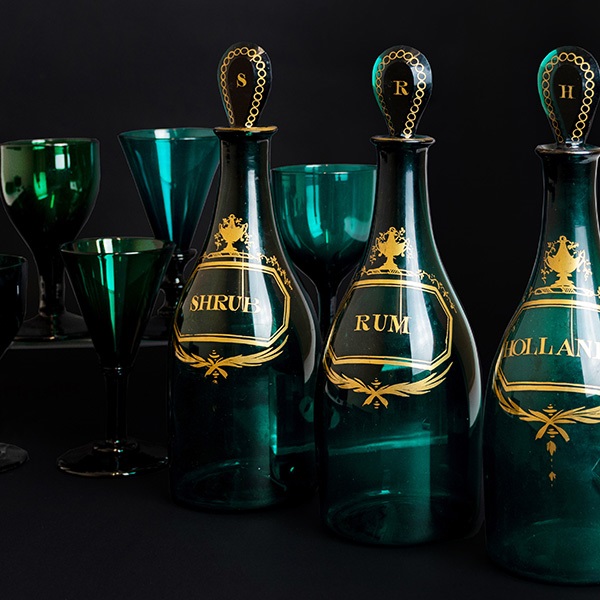
Lot 85
Taxidermy: A Late Victorian Case of Common Redshank (Tringa totanus), circa 1887, by Walter Lowne, Taxidermy, Fuller's Hill Aviaries, Great Yarmouth, a high quality diorama of a family of Common Redshank stood amidst a natural setting of reeds and grasses, upon painted soil groundwork, a brood of four young chicks amongst the grasses below, set against a plain papered interior, enclosed within a period ebonised single-glass display case with gilt slip border, 61cm by 26.5cm by 35.5cm, taxidermist's full paper trade label to verso, originally consigned to Walter Lowne for preparation and mounting by a Mr Smith of Bradwell, in November of 1887, the cost at that time £1-6/-. This was early in Lowne's career, hence the early trade label depicting two medals attached to the verso of this case. Many thanks to Dr Pat Morris for this interesting and useful information.
£300-400

Lot 94
Taxidermy: An Impressive Large Late Victorian Cased White Pelican & White Ibis, dated 1879, by James Gardner, 1844-1917, Bird & Animal Preserver, 52 High Holburn, W.C, and 29, late 426 Oxford Street, a high quality large adult full mount American White Pelican, stood upon painted groundwork beneath, a full mount White Ibis stood besides, both mounted amidst a natural setting of tall thick undergrowth and grasses, set against a graduated pale blue sky back drop, enclosed within a large typical period ebonised three-glass display case, 154cm by 35cm by 104cm, taxidermist's small full paper trade label to interior lower right, together with a large full paper trade label to the verso, bearing label to interior - Southern States of North America, American White Pelican, shot by T. Parkin, on February 4th, 1879, at the South-west Pass of the Trinity River, Galveston Bay, and a White Ibis, shot by the same person on January 26th, 1879, near Annuach, at the head of the Galveston Bay, Texas, U.S.A. The company of James Gardner was known as a purveyor of very high quality diorama cases and held Royal Warrants for Her Majesty Queen Victoria, The Royal Families of England & France and His Highness The Khedive of Egypt, thus establishing their name in the annals of taxidermy history. Ex-lot 214 Tennants Auction of the James Harrison Collection of Birds, May 2022.
£4,000-6,000

Lot 99
Taxidermy: A Bengal Tiger Skin (Panthera tigris tigris), circa 1900-1920, by Rowland Ward Ltd, "The Jungle", 166 Piccadilly, London, a large adult skin rug with head mount, jaw agape, glass eyes, with limbs outstretched, nose to tail 301cm, across the forelimbs 231cm, across the rear limbs 191cm, re-backed onto later black felt backing material with serrated brown felt border
£2,500-3,500

Lot 108
Taxidermy: A Cased Diorama of Eurasian Bullfinches (Pyrrhula pyrrhula), by T.E. Gunn, Naturalist, Upper St, Giles Street, Norwich, a superb case including two adult males and one adult female, all perched upon a centrally positioned branch, above typical soil covered groundwork beneath, amidst a natural setting of grasses, ferns and fauna, set against a wash painted backdrop, enclosed within a period ebonised three-glass display case, 29cm by 14.5cm by 40.5cm, originally purchased from the Phillips auction at Stonor Park, Henley-on-Thames, 28th-29th, 1976, Lot 274, bearing retail trade label to verso for - "The Victorian Taxidermy Co Ltd", purchased from the Victorian Taxidermy Co Ltd catalogue, featured on page 125
£700-900

Lot 130
Skulls: Eastern Moa Skull (†Emeus crassus), an original skull from the extinct Eastern Moa, the upper section including lower beak bone, overall length 12.5cm, the Eastern Moa inhabited the South Island of New Zealand only, and lived in the lowlands (forests, grasslands, dunelands, and shrublands). Human colonists (specifically the Māori who called them "moa mōmona"), hunted Emeus into extinction with relative ease like all moa, it was gone by the year 1500.
£5,000-6,000

Lot 181
Taxidermy: A Pair of Boxing Bennetts Wallabies (Notamacropus rufogriseus), modern, a high quality pair of boxing Wallabies, each wearing a pair of miniature boxing gloves, one performing a south paw uppercut, mounted upon a shaped ebonised wall mounted shield, width 45cm, height 38cm, from the wall 30cm
£400-600

Lot 297
Taxidermy: Burchell's Zebra (Equus quagga burchellii), circa 21st century, South Africa, a high quality adult shoulder mount, with head turning to the left, from the wall 78cm, height 87cm, together with the original tanned flank skin, (2).
£1,200-1,800

Lot 310
Taxidermy: An Anthropomorphic Huntsman Red Fox (Vulpes vulpes), dated 2023, by A.J. Armitstead, Taxidermist & Naturalist, Darlington, Co Durham, a superb quality full mount adult Red fox dressed in hunting attire, including Scarlet red jacket, black waistcoat, and flowered cravat, a brass hunting horn hanging to the left side, leaning against a small fence post with bamboo cane under the right paw, stood upon a grit covered ebonised shaped base, overall height 93cm
£800-1,200

Lot 356
Hyper Realism: "Lucy" The Chimpanzee, dated 2023, by World Renowned Taxidermist & Artist Carl Church, Pickering, Nth Yks. a fantastic hyper-realism head mount of "Lucy" an adult female Chimpanzee, cast in resin from a mould taken from the original clay sculpture, with the highest quality glass eyes and individual implanted hairs, supported upon an ebonised obelisk, enclosed beneath a modern circular glass dome, with supporting circular base raised on three bun feet, diameter 35cm, overall height 69cm, artist's impressed signature to underside, bearing ivorine name plaque to base front - "Lucy".
£4,000-6,000

Lot 382
Taxidermy: A Cased Pair of Extinct New Zealand Huias (†Heteralocha acutirostris), circa late 19th century, by James E. Whiting, Naturalist 19 Heath St, Hampstead, London, a pair of superb quality full mount adults, the female perched slightly above the male, both perched upon a centrally positioned simulated tree branch, three colourful hummingbirds to the centre, upper right, and left, mounted amidst enhanced natural flora, grasses, ferns and fauna, above painted faux rocks to the groundwork, set against a graduated blue and pink sky back drop, enclosed within a four-glass table display case, 46.5cm by 21cm by 53cm, bearing taxidermist's full paper trade label to interior lower right.
The Huia birds extinction had two primary causes. The first was rampant overhunting to procure huia skins for mounted specimens and their tail feathers for hat decorations. The second major cause was the widespread deforestation of the lowlands of the North Island by European settlers to create pasture for agriculture. Most of these forests were ancient, ecologically complex primary forests, and huia were unable to survive in regenerating secondary forests.
It was already a rare bird before the arrival of Europeans, confined to the Ruahine, Tararua, Rimutaka and Kaimanawa mountain ranges in the south-east of the North Island. It was remarkable for having the most pronounced sexual dimorphism in bill shape of any bird species in the world. The female's beak was long, thin and arched downward, while the male's was short and stout, like that of a crow. Males were 45 cm (18 in) long, while females were larger at 48 cm (19 in). The sexes were otherwise similar, with orange wattles and deep metallic, bluish-black plumage with a greenish iridescence on the upper surface, especially about the head. The tail feathers were unique among New Zealand birds in having a broad white band across the tips. The last confirmed sighting of a huia was in 1907, although there was a credible sighting in 1924.
£15,000-25,000










